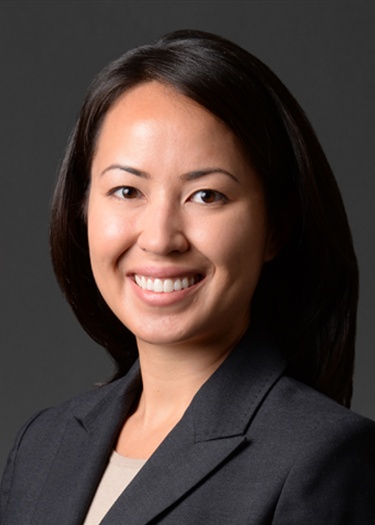Healthcare Update
OIG Approves Manufacturer’s Arrangement to Make Zero-Interest Financing Available to Provider Customers

The U.S. Department of Health and Human Services (HHS), Office of Inspector General (OIG), recently published a favorable advisory opinion, Advisory Opinion 22-13, approving an arrangement through which a durable medical equipment (DME) manufacturer (the Requestor) refers DME-supplier customers who dispense the Requestor’s products (Customers) to third-party financial institutions (Lenders) for consideration of receiving zero-interest financing when the Customers choose not to, or are unable to, pay the manufacturer for the full purchase price within a set timeframe. This is OIG’s first opinion addressing financial lending arrangement programs created by a manufacturer and made available to provider customers. The opinion may also provide guidance to stakeholders on key considerations in lending arrangements for patients as well. The key factors leading to OIG’s approval of the arrangement are set forth below.
The Proposed Arrangement
The Requestor entered into an arrangement (Arrangement) through which two independent third-party financial institutions provide zero-interest financing to Customers who choose not to, or are unable to, pay Requestor the full amount owed to Requestor by the invoice due date. The Requestor noted that arrangements of this type are intended to promote competition and patient choice, as such arrangements grant smaller DME suppliers increased access to products that they ordinarily could not access due to lack of financing options and that may be subject to lengthy reimbursement timelines.
Customers may enroll in this financing option by making a request to the Requestor or by receiving an offer from the Requestor’s credit and collections personnel. To be considered for participation in the zero-interest financing option, the Customer must meet the following eligibility requirements:
1) The Customer owes or will owe at least $10,000 to Requestor.
2) The Customer is in good standing with the Requestor, meaning that the Customer is in compliance with the Requestor’s General Terms and Conditions of Sale.
3) The Customer is an acceptable credit risk, as determined by the Requestor.
Once a Customer has been referred, Lenders perform independent creditworthiness analyses on each Customer to decide whether to offer financing. If the Lender determines that the Customer is eligible, the Lender may extend a financing offer to the Customer. After an agreement between the Customer and the Lender is reached, the Lender then pays the Requestor the amount owed to the Requestor by the Customer, minus a finance charge retained by the Lender.
Importantly, the financing agreements are solely between the Lender and the Customer. The Lender has the sole right to seek payment from the Customer and must use its own personnel to administer, enforce, collect, and litigate if the Customer defaults. In the case that the Customer defaults, the Arrangement includes a “loss pool” that places partial responsibility on both the Lender and the Requestor. The loss pool has three layers of liability, the first and last of which are assumed by the Lender and the second of which is assumed by the Requestor. As OIG recognized in its analysis, the shared liability structure of the loss pool incentivizes the Requestor to refer only the Customers most likely to remain in good standing for the zero-interest financing.
OIG acknowledges that the Arrangement includes several safeguards to decrease the risk of fraud and abuse. For example, the Arrangement prohibits personnel on the Requestor’s sales team from offering the zero-interest financing option to Customers; all referrals must be made by the Requestor’s credit and collections personnel. Under the Arrangement, the Requestor’s sales representatives’ commissions related to transactions where the Customer participates in the Arrangement are reduced by the same rate of the finance charge made from the Lender to the Requestor. Additionally, the Requestor does not advertise the zero-interest financing options in its marketing materials, nor does it guarantee the availability of the financing to any Customer or potential Customer. Finally, the Lenders in the Arrangement are not healthcare providers or suppliers, do not bill or submit claims to federal healthcare programs, and are not able to refer federal healthcare program business to the Requestor.
The Agency’s Analysis
OIG acknowledged that the Arrangement would constitute remuneration under the Anti-Kickback Statute (AKS), as the Arrangement would provide something of value to entities that purchase federally reimbursable products. Even so, OIG concluded that the Arrangement poses a low risk of fraud and abuse under the AKS, based primarily on the following factors:
• First, OIG recognized that the Arrangement, while conferring a benefit to Customers, did not include any additional discount or price concession for Requestor’s products, as Customers under the Arrangement paid the same amount they would had they not participated in the zero-interest financing option, with the sole difference being the timeframe over which that amount was paid.
• Second, OIG concluded that the inclusion of third-party Lenders in the Arrangement reduced the risk that the Requestor could use the Arrangement to offer, subsidize, or forgive loans to induce the Customer to purchase additional products. OIG emphasized that the decrease in fraud and abuse risk was, in part, due to the placement of the responsibility for creditworthiness analysis, collection for payment, and defaulted loans on the Lender and to the Lender’s abilities to make independent determinations.
• Third, OIG found that though the finance charge included in the Arrangement caused the Requestor to receive less money than it was owed by the Customer, because the charge conferred a benefit to the Requestor unrelated to its federally reimbursable products and the Requester certified the finance charge was the result of arms-length negotiation, the charge carried a low risk of fraud and abuse under the AKS. Because the Lender is responsible for the administration of the financing agreement, including collecting payment from the Customer and litigating defaults, the finance charge represents a negotiated transaction of value unrelated to the Requestor’s product.
• Fourth, OIG concluded that the Arrangement would not cause increased costs to federal healthcare programs because DME products are reimbursed based on fee schedule amounts and are not affected by the amount that the Customer paid for them. The Arrangement likewise would not lead to overutilization, as DME suppliers do not prescribe equipment, OIG reasoned. OIG further noted that while the Arrangement might give the Requestor a competitive advantage over other manufacturers without similar arrangements, the risk of fraud and abuse under the AKS was low due to the safeguards included in the Arrangement.
• Fifth, OIG found that the Arrangement presented low risk of fraud and abuse under the AKS because the Arrangement required shared responsibility between the Lender and Requestor in case of default, which disincentivizes the Requestor from referring Customers to the Lender that are unlikely to fulfill their payment obligations.
OIG’s opinion provides an additional source of guidance for manufacturers, suppliers, and lenders alike in their increased focus on expanding product access, increasing competition, and furthering patient choice. The opinion may also be of interest to stakeholders considering lending options to patients seeking to access items reimbursed under the federal healthcare programs.
Attorney Advertising—Sidley Austin LLP is a global law firm. Our addresses and contact information can be found at www.sidley.com/en/locations/offices.
Sidley provides this information as a service to clients and other friends for educational purposes only. It should not be construed or relied on as legal advice or to create a lawyer-client relationship. Readers should not act upon this information without seeking advice from professional advisers. Sidley and Sidley Austin refer to Sidley Austin LLP and affiliated partnerships as explained at www.sidley.com/disclaimer.
© Sidley Austin LLP
Contacts
Related Blogs
Capabilities
Suggested News & Insights
- Stay Up To DateSubscribe to Sidley Publications
- Follow Sidley on Social MediaSocial Media Directory


